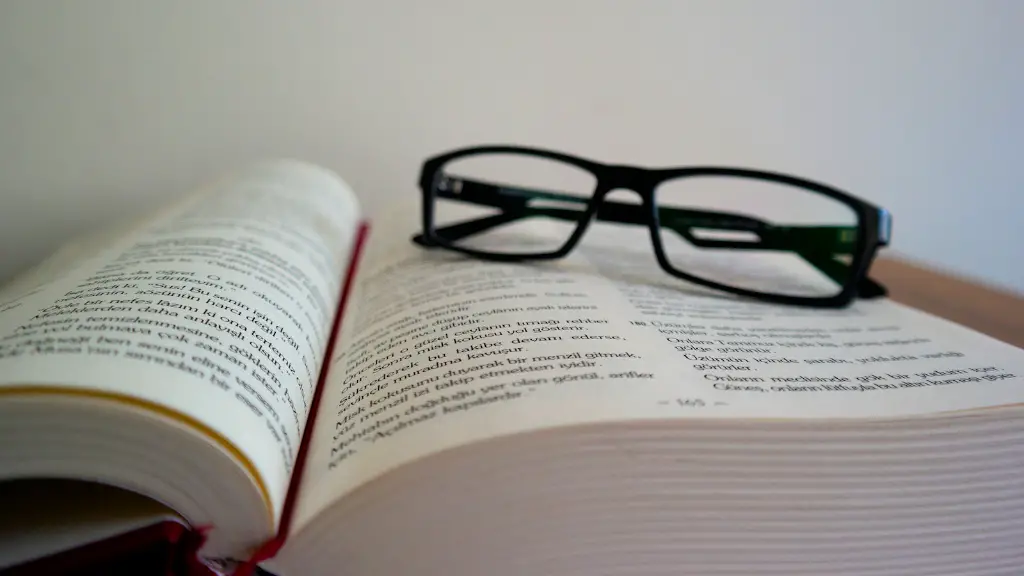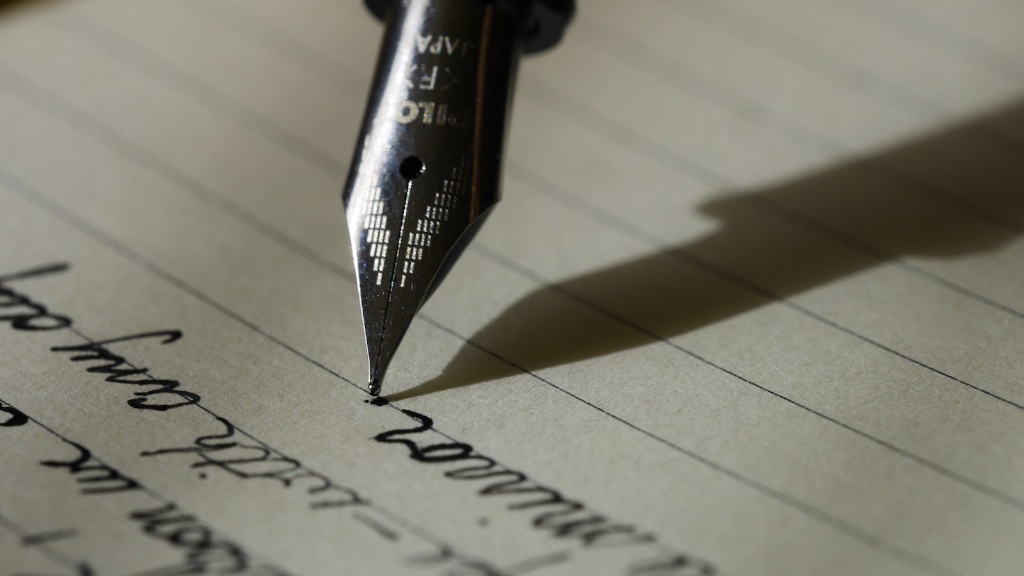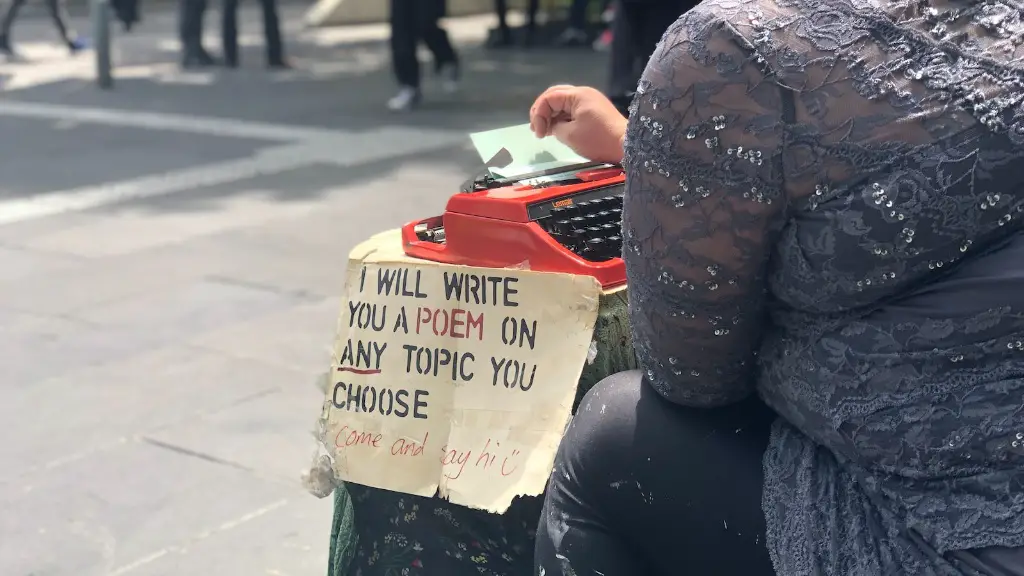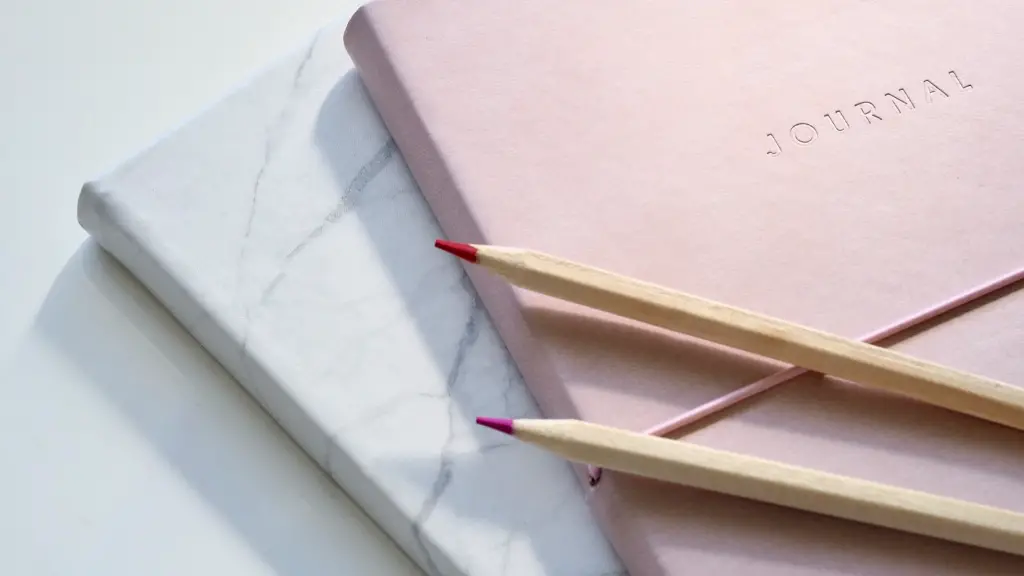Poetry, with its intriguing arrangement of words, carries an irresistible allure. It has the power to transport readers to an emotional state, or explore the intricacies of an idea. Poetry has taken its place in literature, evolved over time and is embraced by many. But understanding the techniques of a well-crafted poem is not as straightforward as one might think.
For the uninitiated, it can be difficult to understand the many components that go into producing a successful poem. Different forms, rules, and choices of words are only the beginning of creating a compelling poem. Nevertheless, understanding the structure of a well-crafted poem is not as daunting as one might think.
The use of rhyme and meter – two principle elements of poetry – are key to understanding the impact of poetry. They have their roots in the early days of literature and have endured for hundreds of years. Another essential element of poetry is imagery, the use of words to create mental pictures in the mind of the reader. It is no surprise that these three components are fundamental to the structure of a successful poem.
The lyric poem is the most classic type of poem, and often follows specific ‘rules’ or conventions. These range from the regular use of rhythm and rhyme to complex themes and structure, such as with the sonnet. The form of the poem often defines its meaning, providing readers with a structure in which to interpret the poem.
Modern day poetry is often much more complex, liberating itself from the conventional restraints of traditional poems. Still, there are general ‘rules’ that all poets should adhere to. These include the use of language which is poetic, original and meaningful. Selecting the right words and phrasing them in a creative and emotive way is vital in creating a worthwhile poem.
Today’s poets should also be aware of the cultural environment and take care to use language that is neutral, thereby avoiding any offense. Writing poetry in a manner which the reader can distinguish from plain prose is also essential, allowing the poem to come alive to the reader.
So, it is clear that there are several factors which need to be considered when writing a successful poem. But ultimately, all good poetry comes from the heart of the poet. The poem should evoke emotion and spark creativity, transporting the reader to another place. With this in mind, let us now consider the rules of poetry in more detail…
Rhythm and Meter
One of the most important rules in poetry is to ensure that the poem has a regular rhythm and meter. This creates harmony between the lines and words, and their sound together. By alternating words which sound different, the poet can create a lyrical effect.
The use of a particular rhythm or meter is also essential in classical meters such as the sonnets. This strives to give the poet a degree of structure and organization in which to explain themselves more thoroughly.
Rhythm and meter are also important in modern day poetry, as they act as a reference throughout the poem. Depending on the poet’s technique, this can be used for comic effect, or to create an emotional connection between the reader and poet.
In some cases, rhythm and meter can provide the poem with a theme or purpose. That is, it can provide the reader with an idea of what the poem is trying to say. Hence, the use of rhythm and meter is extremely important in poetry and it is vital that poets take care to use them correctly.
Imagery
The second rule of poetry is the use of imagery. Imagery is the ability of words to create images in the reader’s mind, and this is essential in poetry. Imagery helps to bring the poem to life and provides the reader with a completely different experience from reading prose.
When using imagery, it is important for the poet to take care to create visual landscapes that readers can understand. The use of metaphor and simile is also important in this regard, as it can create an additional level of meaning. In some cases, these poetic devices can make the poem more personal and have a greater emotional impact on the reader.
Finally, it is important for the poet to ensure that the imagery used in the poem is relevant to the rest of the poem’s content. This helps to create a more cohesive and meaningful experience, as readers can relate the imagery to the poem’s main theme.
Theme and Structure
When it comes to poetry, it is important to select an appropriate theme and structure for the poem. This forms the groundwork of the poem and will determine its success. It is important to think carefully and select a theme that is interesting, meaningful and thought-provoking.
The structure of the poem should then be established. The poet should determine what sorts of lines, stanzas, and rhymes will be most effective for conveying the message of the poem. Different rules must be followed for different poetic forms, and it is essential for the poet to understand the form and conventions for the poem.
Once this is done, the poem can be tailored accordingly. Depending on the poet’s idea and concept, the poem can take on many forms such as ballads, odes and hymns. Using a particular poetic form and adhering to specific conventions can greatly enhance the poet’s expression of the theme and purpose of the poem.
Language
The final and perhaps most important rule of poetry is the use of language. It is important for the poet to select words which are meaningful and compelling. The language of the poem must be poetic, and not merely contain descriptions of everyday events.
While the language of the poem must be poetic, it is also important that the words are neutral and nonoffensive. As such, using proper language is essential, and words which are too suggestive or offensive should be avoided.
Finally, it is important for the poet to ensure that the language of the poem conveys the desired meaning or message. This can be done by taking care to phrase the words and lines in an engaging and emotive manner, appealing to the reader’s senses and emotions.
Subtext
In addition to the above rules, poets should also take care to include deeper meanings and implications into their poetry. This is known as subtext, and it can provide a poem with a more layered and nuanced meaning, as well as improve the overall quality of the poem.
Subtext relies on carefully crafted metaphors and symbols to communicate deeper messages. These symbols can range from simple objects to more abstract ideas, and this adds a greater level of complexity and meaning to a poem.
In addition, subtext can also be used to create an emotional connection between two characters, giving a poem a more personal and meaningful narrative. By adding in subtext, the poet can create a work which has more than one meaning, allowing for multiple interpretations.
Open Form
Finally, modern day poets should be aware of the concept of open form, as this provides them with greater freedom to express their ideas. Rather than following traditional conventions and adhering to specific rules, open form allows poets to explore more abstract ideas and explore different metrics and rhythm.
Open form is a great way for poets to break with the conventions of the past and try something new. It gives them a chance to find their own unique voice and create a poem which expresses their true feelings and ideas.
In conclusion, it is clear that there are many ‘rules’ which govern the structure of poetry. These rules vary depending on the type of poem, but they all ultimately serve the same purpose: to create an emotive, meaningful and enjoyable poem.





